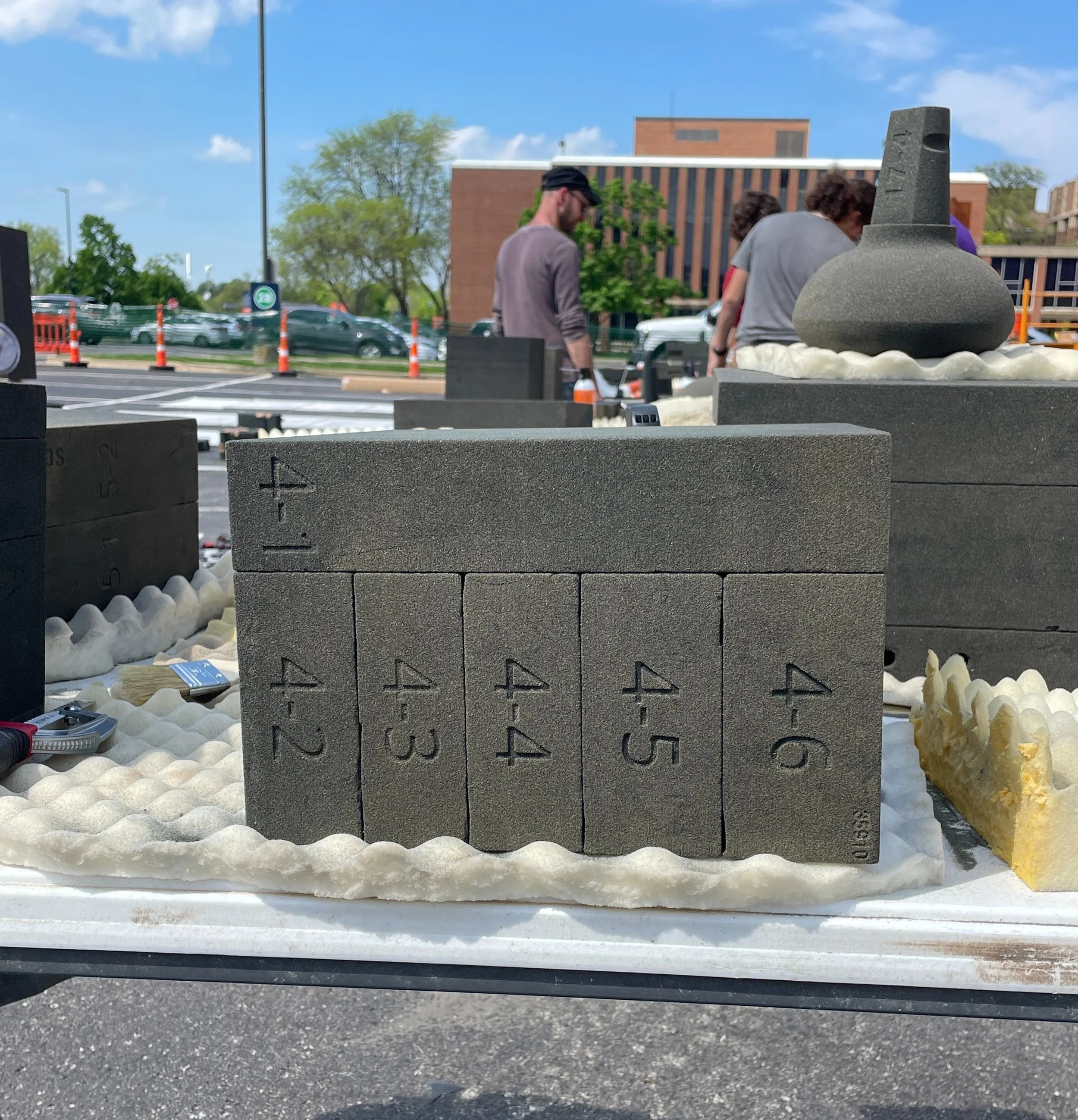PART DESIGN
The Iron Dog
A FIGURE HAND CAST FROM MOLTEN IRON
OVERVIEW
I participated in the 2024 Segal Iron Pour, an annual event hosted for the Northwestern and Evanston communities that explores the centuries old manufacturing process of iron casting. My involvement included part design, process setup, and pour execution in full leather!
SKILLS
Design for manufacturing
Mold design and orientation
Manufacturing process optimization
3D CAD - NX
I was inspired by Jeff Koons’ Balloon Dog statue in my design. I used the NX sweep tool to achieve the smooth and realistic curvature.
MOLD OPENING
MOLD DESIGN
I then prepared the part and designed the mold.
Added pourcup, runners, sprue, and vents to form negatives of iron pathways in mold
Created continuous flow paths to minimize iron turbulence and promote laminar flow
Oriented the most intricate design feature, the nose tip, downwards in the mold to ensure the iron would fill.
MOLD PREPARATION
I produced a sand mold based on my design through binder jetting - a 3D printing process. Before the pour, I cleared the sand from the negative section and used a series of dowel pins to assemble the cope, drag, and cheeks of my mold, then bound them together with steel ribbon
After the molds fully cooled, I used shears and pliers to crack open mine open, watched the sand crumble away, and saw my iron creation for the first time.
FURNACE ASSEMBLY
We spent the first day of the iron poura ssembling the furnace - a continuous flow, intermittent tap furnace - and weighing and portioning the iron chunks and coke, refined coal that is pure carbon , which must be added to the furnace at a precise 1 to 5 ratio in order to ensure proper stream of the iron.
I experienced firsthand how engineering and manufacturing can be just as much an art as a science. All of the moving pieces, critical timing, and precision required to put on this elaborate production made it feel almost like a dance. We rehearsed several times beforehand, conducting “dry walkthroughs” of all of our roles because once the furnace was really lit, we were on a ticking clock. When it came time for the real thing, the beauty of the process utterly amazed me. I learned to stay calm under time pressure to trust my gut. I also built an immense amount of trust with my peers, faculty, and the experts there to support us.
To experience such a primitive, stripped back form of manufacturing with no frills or modern technology was incredibly meaningful. It reoriented my perspective on today’s constant innovation and it was a pleasure to take a step back to engineering’s roots, experiencing firsthand the foundation from which modern processes stem from.
REFLECTION
THE POUR
We moved in pairs of two to serve as “ladle crew”. Once the furnace was lit and iron became ready to be poured, we tapped the furnace and 70 pounds of iron was released into the ladle. My partner and I worked methodically to fill 4-8 molds with each tap before the metal rehardened.








